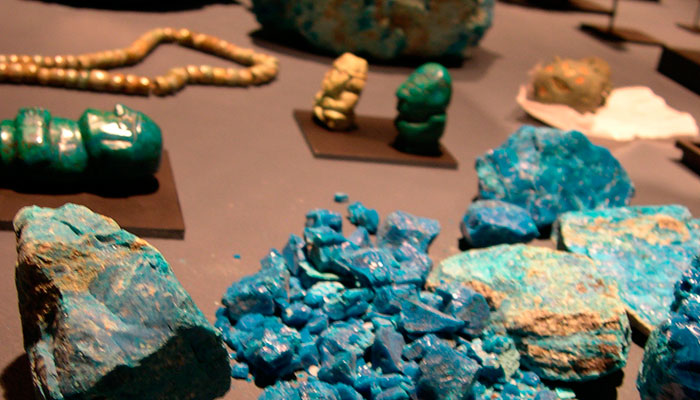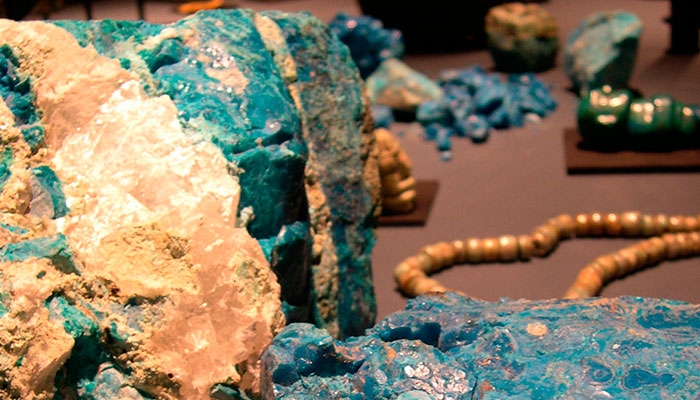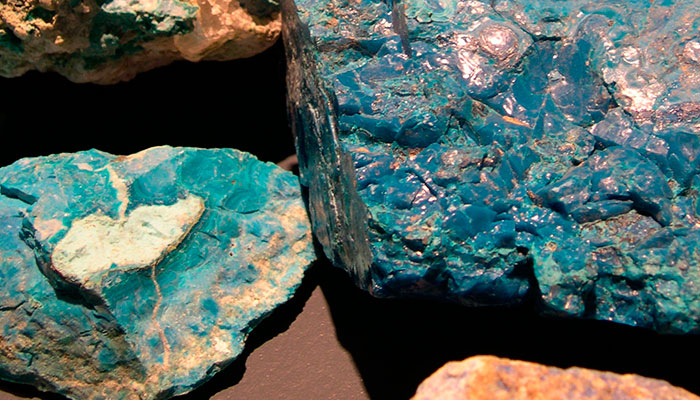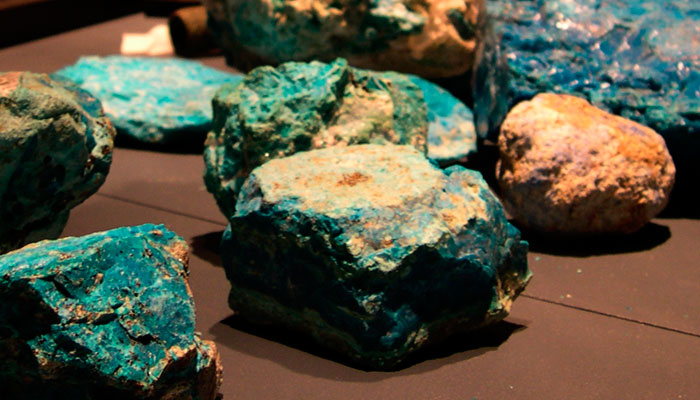The Art of Copper in the Andean World – 2004
- From stone to jewel
- Metal tools
- Chromatic palette of copper
- Metallic sounds and glitters
- Bronze bells
- Metals for taking away life
- Copper on the shaman’s altar
- Copper in the andean iconography
- Metallic bodies
- The face of death
- Food for men
- Food for the gods
- The power of the cailles
- Epilogue
- Galería de fotos
Food for the gods
The Andean peoples offered minerals to feed the gods in order to obtain favors from them. They did it in such a way that the quality of the offering would justify the efficacy of the divine services. These deities were voracious consumers of offerings. The ritual mesas, or altars, were culinary offerings made, precisely, to satisfy this supernatural appetite. The “dishes” they preferred were mesas consisting of different ingredients, that were handled during the preparation process according to the sacred guests’ individual culinary tastes. The “food” was accompanied by libations of corn chicha, quinoa or algarrobo, to meet the tastes of the gods being entertained and, most certainly, of the hosts.
Among the main ingredients of the Andean ritual banquets were minerals. Small pieces of turquoise, chrysocolla, sodalite and other copper minerals, raw or in the shape of small beads, appear in geoglyphs, offering pits, small boxes and ceremonial mounds, close to the llama caravan paths that crossed the desert and the puna in pre-Hispanic times. These little green or bluish-green pieces are the surviving ingredients of the “food for the gods” left by the old llama herders as part of their traveling rites. Their beliefs held that animals, roads, good luck and everything that is vital in a trade expedition did not belong to humans but to the deities who inhabited the earth and the mountains. If the divine appetite was not satisfied, then an “offering debt” occurred, leaving the travelers without protection from the many dangers and hard conditions of life in the Andes.







































